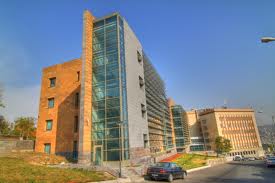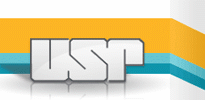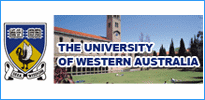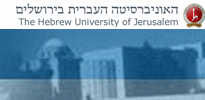Armenia: Armenia Higher & Postgraduate education
2011/06/05
 Higher and postgraduate professional education is performed in three degrees: there are programmers for Bachelor degree, for the degree of a certified specialist and master's degree in both state and non-state education institutions, stationary and distant education forms, for paid and non-paid students. At post graduate courses there are masters and doctors' courses. The aim of higher education is to train and retrain highly qualified specialists, and to satisfy the individual's professional development demands.
Higher and postgraduate professional education is performed in three degrees: there are programmers for Bachelor degree, for the degree of a certified specialist and master's degree in both state and non-state education institutions, stationary and distant education forms, for paid and non-paid students. At post graduate courses there are masters and doctors' courses. The aim of higher education is to train and retrain highly qualified specialists, and to satisfy the individual's professional development demands.
16 state universities and 73 non-state universities, where 46100 and 18270 students study accordingly. 30 of the non-state universities provide certified professions. The number of state universities increased by 14.2% against the indicator in 1991; the number of students though has reduced by 40%. Nearly 36% of the total number of students is in non-paid sector. In 9 universities of the republic currently operate postgraduate courses and doctor's courses, and in 3 universities there are master classes, where 576 masters, 1196 postgraduate students and 28 PHD students study for free, and 1295 masters and 96 postgraduate students study as paid students.
 The university teaching staff involves 5956 professors and lecturers; among them there are 672 professors, 1637 docents. The teaching staff has increased by 6 % as compared to the 1991 indicator. 28, 3% of the pedagogical staff are women. Professor/student ratio is 1/7 currently.
The university teaching staff involves 5956 professors and lecturers; among them there are 672 professors, 1637 docents. The teaching staff has increased by 6 % as compared to the 1991 indicator. 28, 3% of the pedagogical staff are women. Professor/student ratio is 1/7 currently.
There are 3356 professors in the non-state universities.
The average age of the pedagogical staff is 55 and of the scientists 60, which steadily tends to grow.
The university and postgraduate professional education budget allocation is almost the 12% of the education budget.
The reforms in higher and postgraduate professional education include the education structure, content and management. As an outcome result of the reforms three level programs were introduced in three universities in the Republic, with bachelor, masters and postgraduate programs.
New professions in the higher education are introduced; extension programs are added to the basic humanities (“rights”, “applied economy” and other alternative mandatory humanities are introduced); education is becoming more humanistic; universities are receiving more autonomy in management and finance.
RA Government has approved the standards for higher professional education. The private universities are regulated by the enforcement of licensing and accreditation procedures approved by the Government, which promotes competition in the sphere of higher education.

In the past all the instructors and professors of the professional education institutions were required to take a refreshment course at least once in five years on mandatory basis and in a centralized way. These courses ceased to exist since 1991 mainly because of lack of funding. The issue of professional development of the researcher and pedagogical staff is now left to the shoulders of institution and mostly to the staff itself.
EDUCATION SYSTEM MANAGEMENT
RAeducation management system has experienced frequent and not always justified institutional adjustments and human resource replacements during the last decade. The ministry has been reshaped several times; the middle management level has been reconstructed twice.
Finally the liabilities and responsibilities of the Government, Marz and Community level education authorities were defined in the “Law About Education” adopted in 1999.
The education system management is performed on three levels.
RA Ministry of Education and Science: develops the education development plan and the state education standards and controls their implementation; ensures the development and publication of general education curriculum and subject syllabi, provides textbooks and handbooks; provides state license and accreditation to education institutions; develops model charters for the state education institutions; approves the accreditation procedures for the pedagogical and managing staff in the education institutions; develops the list of specialization in universities; develops the state order state paid places for general, middle professional and higher professional education; approves the entrance examination guidelines and controls their implementation in state and licensed private middle and higher educational institutions; approves the procedures of student knowledge assessment; at transition from one level of education to the others; approves the honorary degrees and titles granted by the scientific councils of the licensed higher education institutions; develops the models of state graduation documentation at all the graduation levels; defines the guidelines for defining adequacy and acknowledgement of the foreign education graduation documentation; ensures the creation of development plans for the state education institutions and their implementation and supervision; gives its consent for the appointment and resignation of the Marz and community education department heads.
The district and community administration of education is implemented by the local self-governing bodies in the face of the Marz education departments. The assignment and resignation of their managers is agreed with the Ministry. These authorities ensure the enforcement of state education policy in Marz or community; they keep register for the pre-school and the school age children and ensure their enrollment in the education institutions. Besides, the Marz education departments are responsible for the construction of educational institution buildings and facilities, their utilization, maintenance.
The imperfection of the laws and regulations enforcement mechanisms of the, some complete absence, delays in of the laws and regulations, as well as the contradictions in the legal area hinder with the complete implementation of education policy.
The absence of operational links between the central government, regional administration and local government is also the consequence imperfect legislation on in education. The education institutions function under the umbrellas of different authorities, but there is still some unclear in definition of responsibilities. The absence of norms and regulations that would ensure management coordination creates serious difficulties for education administration agencies. Uncertainties are arising, when the different executive agencies adopt regulations contradicting to each other.
Adequate management skills are missing almost in all the levels of education management. The self-management mechanisms in education institutions are also very weak.
The lack of competition between individual institutions creates obstacles in development of real autonomy. Because of the imperfection of adequate supervising system, the real basis for autonomy cannot be placed in.
The society involvement in education management and democratization process of education system is very slow.
EDUCATION SYSTEM FINANCING
AArmenia education system is mainly financed from the state budget. The share of education in 2003 was the 10, 5% of the national budget, or only the 2% of GDP, which is nearly the half of world average. It should be compared with the 1991 level, when it was 7,2% of GDP. The education budget in the structure of the State Budget is defined by the levels of education and operational classification. The current budget financing does not allow ensuring all the required expenditures – food, services, routine maintenance costs for the building and facilities - for regular operation of the educational institutions. No budget allocation is envisaged for the development of teaching materials. The current funding level does not allow ensuring education process that meets the contemporary demands, or to create adequate social environment for the staff and students. The whole network receives funding which is considerably below the level of the real demand. The fund allocation within the system is completely inconsistent (Annex 2). Except the rarity of the budget facilities, the share of education budget within the national budget is also very small, though some growth tendency is observed during the recent years.
Efficient fund utilization is of special importance in an environment of rare facilities. The available budget allocation and out of budget facilities are allocated and utilized inefficiently, in a not systemized way both by education levels (preschool, basic and general secondary education, middle and higher professional education), and by type of expenditure within the budget of individual institution; all these do not comply with the international practice. Parent contributions are also not systemized.
Though adjusted alongside with the development of market relationships; the current government finance structure still has the influence of the Soviet regulations. The analyses of education budget allocations show the government prioritizes education. In education finance structure the general education share in 2000 has increased to 72%, which exceeds the average European indicator (70%), when in 1996 it was 41%. It should be mentioned though, that the general education allocations increase not due to general education budget increase, but due to budget restrictions for different education agencies within the system. As mentioned above, the government funding for preschool education has been gradually reduced, and has ceased completely in 1997.
EDUCATION IN ARMENIAN SPIRIT IN THE DIASPORA
IIn the current stage of development of Armenia the main role of education is to meet the need for creating a democratic and rule of law state, for transition to market economy and to comply with the international tendencies of development in economy and society.
In order to ensure the development and compatibility of the education system and in order to be able to integrate into the international, network, it should become a high priority for the state, and the state itself should take the responsibility and play the most active role in developing its education network.
The strategy of Armenian education system development reflects the following main principles and development tendencies and is prepared in the social and cultural context of human civilization:
- · Education is universal,
- · Strengthening of the cultural and humanistic aspects in education, universalism and separation from technocratic character,
- · Integration of the education sphere into other spheres, increase of social demand for education, increase the role of civil functions,
- · Increase the role of fundamental education, information flow and the role of ecology,
- · Therefore, it is necessary to achieve the following:
- · Increase the education quality; make it meet the internationally accepted standards of education,
- · Increase the efficiency of education network by utilizing new legal, economic, and organizational mechanisms and by attracting out of budget resources,
- · Increase the professional qualification and social protection level of the education specialists,
- · Introduce new technologies into the education institutions and create mechanisms for ensuring their progressive development,
- · Integrate the Armenia education network into the international education community.
- · Revise the structure and the content of general secondary education considering the length of education at each level, and ensure the transfer to 11 years, and then 12 years of education
- · Revise and practice the new criteria for education and curriculum,
- · Revise the subject syllabus from the aspect of developing logics, critical thinking, analytical thinking, efficient communication skills, logical and critical capacity, and capability of learning individually in the students.
The revision of subject syllabus will include three main directions in strategy:
- · application of new teaching methodologies in teaching process;
- · development and application of teaching process and student knowledge assessment new system;
- · application of communication technologies in teaching process by and large as a contemporary means of organizing education;
- · developing an independent public system for education quality assessment that does not depend on education management authorities;
- · equip the education institutions by contemporary information and communication technologies;
ACTIVITIES PLANNED FOR GENEGAL EDUCATION DEVELOPMENT
Revise the structure and the content of general secondary education considering the length of education at each level, and ensure the transfer to 11 years, and then 12 years of education
- · Revise and practice the new criteria for education and curriculum,
- · Revise the subject syllabus from the aspect of developing logics, critical thinking, analytical thinking, efficient communication skills, logical and critical capacity, and capability of learning individually in the students.
The revision of subject syllabus will include three main directions in strategy:
- · application of new teaching methodologies in teaching process;
- · development and application of teaching process and student knowledge assessment new system;
- · application of communication technologies in teaching process by and large as a contemporary means of organizing education;
- · developing an independent public system for education quality assessment that does not depend on education management authorities;
- · equip the education institutions by contemporary information and communication technologies;
- · conduct a complex training of the teaching staff that includes new teaching methodologies, utilization of information/communication technologies in teaching process, etc.
The World Bank financed second Loan project called “Education Quality and Compliance” will target funds to achieving the above objectives.
ACTIVITIES PLANNED FOR PROFESSIONAL EDUCATION DEVELOPMENT
In Professional Education area - it is planned to create a permanent monitoring system for specialists of diverse qualification and this will be based on international experience
It is also planned to create an efficient system of assistance to the graduates for employment, include-ding the aimed contracting system, develop the capacity of alternative job selection, as well as the capacity for individual orientation and starting a private job.
In the row of strategy directions in professional education development a special weight is given to the strengthening and renovation of the infrastructure and capacity building. There is a need for ensuring primary and secondary professional progressive development, because in the current stage the demand for primary and middle range professional specialists in industry is increasing in the economy. The education content in the training program for middle professional education should be radically renovated and the quality of the specialists should be improved; this specialist qualification should meet the international standards; the primary and middle professional education institutions should get decidedly reshaped and the needs of the local labor market should be considered. The professional education management system needs a serious reform. Quality changes should take place in all the levels of professional education process and development, in the area of transactions between the counties and the center.
For achieving new quality in professional education the following is envisaged:
- · resolve the problems in professional education: ensure participation of the employers and other social partners in resolving the basic issues in professional education which are: development of education criteria in compliance with the contemporary needs; designing the demand for training professionals; training specialists on contract basis and human resource policy implementation on the local level;
- · fundamental improvement of the professional institutions' technical capacity;
- · increase the status/ reputation of the higher education institutions as the best producer of high quality professionals, as the decisive factor for development of public productive capacity and as the permanent renovating agency for professional education;
- · provide public assistance to the leading scientific and creative schools, by defining the regulation and manners of providing such assistance;
- · design conditions for the specialists permanent professional development; ensure continuity between different levels of professional education; develop efficient system for the additional professional education, that would ensure psychological assistance to the population during the changes in activity stiles or in case of promotion in career,
- · centralize the training for resigned or unemployed people on competitive basis in the primary and middle education institutions based on the employment center reports
New management and economic mechanisms are needed for ensuring education management and finance, and the important elements of these mechanisms are:
- · ensure increase the financial operation efficiency of the education institutions, ensure the transparency of the education institutions financial activities and increase their financial responsibility,
- · create conditions that would make the attracting of additional funds for the education institutions possible,
- · ensure tax exemption for the network,
- · increase the level of additional paid education services on the background of education institutions
- · Create cultural, education and production and health centers having the education institution as a background (especially in the rural areas).
IMPORTANCE OF THE EDUCATION MANAGMENT INFORMATION SYSTEM
All the reforms taking place in the education network are directed to the Education Management Information System. It is of key importance for ensuring the information flow.
Generally, in the area of education information on one hand serves as background for the management of the sector; on the other hand it is the content of the education process.
The role of information is immense in education management, firstly, because in each definite stage of society development it is important to decide what the content of teaching process is. Secondly, because the teaching process being a complicated and dynamic process implemented at school, is closely linked with the social environment and other social subsystems. The organization process of actual management, regulation of the links and relevance between its different parts, is implemented based on the background information.
Information includes the comprehensive data, which reflects the objective reality and is used for orientation, active functioning and for management. Information is aimed at maintenance, improvement and development of the given system qualities.
A special component in information is the statistics. Statistic information has both reporting and controlling character. It includes qualitative and quantitative data about different sides of object operation. Statistics is a tool for summing up an object's open-ration results, analyzing it and giving the characteristics. In Education the main objective for information is not only to find out how is the teaching process progressing, measure its efficiency, difficulties and shortcomings, but also provides opportunities for decision making about coping the shortcomings and difficulties. Information allows discovering the new phenomena and tendencies in general education, which in its turn allows building up forecast.
As far as management efficiency is concerned, information and its processing referring education in general, and referring the general education in particular are not only a highly practical value, but are also of great scientific value. Therefore, information is part and parcel of management, which provides links between different sectors of school management, and it is the most important factor of combining and regulating the activities. Correct organization of information flow in all the sectors of management is a pledge for its high quality. As far as education is an incessant process, then the information data collection should be of permanent character. Such is the philosophy behind the unity of management and information.
INFORMATION MANAGEMENT SYSTEM INTRODUCTION INTO THE GENERAL EDUCATION IN ARMENIA
TThere was no any statistic data and report collection and analysis system in Armenia general education before 1999. Information about the education institutions was being collected by the form ways, which means visiting the sight, having telephone calls, etc., that do not meet the current need for data collection.
“Education Management Information System” (EMIS) has been introduced in the framework of “Education Management and Finance Reform” project for resolving the above issues, which ensures total data collection , processing and analysis in an optimum way, both on local and National levels.
EMIS is a complex of statistic data that collects, maintains, analyses and disseminates adequate information for education planning and management.
The goals and objective of the education management information system are:
- · improve data collection, maintenance, analysis, commenting and disseminating process for the purpose of supplying the education network decision makers with needed information,
- · make information available in all management levels for doing efficient planning and management,
- · collect target information by reducing the collection, of unnecessary data to minimum
- · ensure information availability and transparency of education network data.
- · make decisions based on information and its analysis.
The data collection mechanism is important. Generally the information flow has a definite direction: school - marz education department - MIS center and vice versa.
Information Flow
The school is the agency that ensures trustworthy, whole, high quality information. After being collected at school level, information is further developed, completed and summarized at the next levels of general education – marz education department and MoES. Generally data collection and processing at the given stage of management has three stages. At the first stage initial data is collected. The schools report on the given school year by special formats –“About the General Education institution Activities”. These formats are compiled and entered by specially developed computer program.
At the second stage the collected initial data is summarized, corrected and edited, the aim of which is to get large scale indicators, which are needed for accounting, distribution, planning and general management.
Data analysis, summery and conclusions needed for decision-making take place at the third stage.
The following activities have been carried out in 1999 – 2003 for EMIS establishment and introduction:
EMIS introduction design, implementation plan and reporting format were developed in 1999.
In 1999 MOES and National Statistic Service have approved the reporting format “About General Education Institution Activities”, which includes summary information about general education institution activities and consists of 9 sections:
“About General Education Institution Activities” report format comprises summery information about general education institution activities and consists of 9 sections:
A - “Visiting card”
School status, type, (primary, secondary, special character, etc.) working timetable, type of ownership, administrative belonging, address.
B – “Top management”
First names, surnames, date of birth, education, and experience of the school director, deputy director, organizer, accountant, and the school board chairperson.
C – School building and facilities
Type of the building, physical shape of the building, communication /sewage system, conditions of activity, the number of classes busy at the same time by shifts, available school furniture, teaching materials and utilization.
D – Number of subject hours by curriculum:
Number of hours by mandatory subjects, additional subjects and by grades.
E – Teachers:
Number of teachers by gender, specialized or non-specialized education, teacher employment level by distributed hours, teacher flows, vacancies by subject type and teaching load, teacher that have attended refreshment courses and have qualification.
F – Students:
Student number by gender, age, by teaching language and grades; distribution of student numbers by shift by out of school studies; school drop outs by age and by drop out reason; student absentees by subject; participation in school Olympiads by levels; examination results by education levels and by graduating grades; graduates; student flows by grades.
H – Non-teaching staff.
Numbers of the administrative and technical staff, service provider for technical studies, laboratory workers, librarians, doctors by gender.
Section I – Library stocks:
Library stocks at the beginning of the year and eat the end of the school year,
Number of readers, librarians, reading places.
J – Fund purchase and utilization:
Available national budget and out of budget funds, financial expenditure from the budget allocations and out of budget funds.
- · In 1999-2000 al the marz education departments, MOES departments and the “Center for Education Reform” have been equipped with computers.
- · In 2000 a computer program package has been developed that ensures data entry, maintenance, processing, utilization and analysis by year.
- · In 2001 a computer network was created (through modem communication) including the marz education departments, “Center for Education Reform”, MoES departments and the “Center for Education Projects”.
- · In 2000 –2001 MIS maintenance specialists were trained.
- · A school database for the school years 2000 –2001, 2001 –2002 , 2002-2003 and 2003-2004 was created.
As an outcome result currently we have a general education institution data collection and processing system in place that ensures:
- 1. regular data collection, efficient and interrelated analysis, as well as immediate information provided to the relevant management agencies,
- 2. data efficient flow from the lower levels to the upper levels and vice versa,
- 3. marz community, school and parent access to data analysis and school indicators.
- Related Articles
-
Exports of goods and services (annual % growth) in Armenia
2011/09/24 Exports of goods and services (annual % growth) in Armenia -
Armenia Inflation average
2011/09/24 Armenia Inflation average -
IMF Data & Forecasts
2011/08/10 2010 2015 Scale Units GDP at constant prices 1695.54 2052.82 Billions
-
- Armenia News
-
- AFGHANISTAN: The newly created Eurasian Economic Union (EEU) has shortly got the momentum
- ARMENIA: 2015 Euro-Asia Economic Forum in Xi'an,
- ARMENIA: EU-funded project: round table on ethics and disciplinary issues in Georgian Bar Association
- ALBANIA: TAP starts construction of access roads, bridges in Albania
- AFGHANISTAN: Revised IMF forecasts signal gloom on global economic outlook
- AFGHANISTAN: Oxfam Study Finds Richest 1% Is Likely to Control Half of Global Wealth by 2016
- Trending Articles
-
- FRANCE: Cavendish doing it for Africa
- CONGO BRAZZAVILLE: Congo: Total abandons oil field citing decrease in global oil prices
- SOUTH AFRICA: South Africa’s Biggest Labor Group to Balance Pay With Job Security
- EUROPEAN UNION: EU meets without Britain for first time since Brexit vote
- NIGERIA: Lagos hosts 2016 Africa fashion week Nigeria
- KENYA: Nairobi to host 14th UN conference on trade and development










